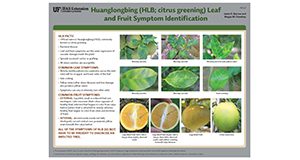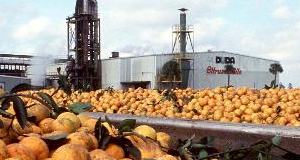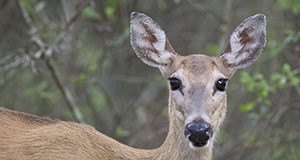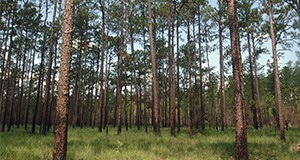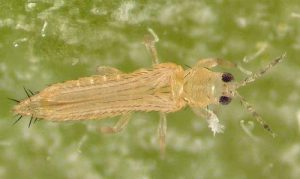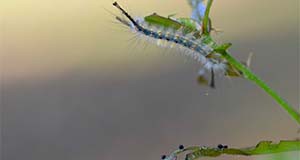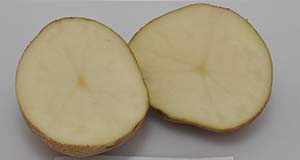 Butterweed is a winter annual that is toxic to both cattle and horses. This 2-page fact sheet provides an overview of the plant as well as herbicide recommendations. Written by Brent Sellers and Jay Ferrell, and published by the UF Agronomy Department, May 2016.
Butterweed is a winter annual that is toxic to both cattle and horses. This 2-page fact sheet provides an overview of the plant as well as herbicide recommendations. Written by Brent Sellers and Jay Ferrell, and published by the UF Agronomy Department, May 2016.
http://edis.ifas.ufl.edu/ag406
Category: Agriculture
Frequently Asked Questions About Huanglongbing (HLB; citrus greening) for Homeowners
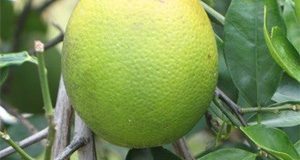
Huanglongbing (HLB), also known as citrus greening, is a serious bacterial disease that affects citrus in Florida. Florida residents enjoy growing citrus for a variety of reasons, but growing citrus in today’s disease climate is not an easy task. This seven-page document is designed to help Master Gardeners and homeowners answer commonly asked questions about HLB. Written by Brooke L. Moffis, Jamie D. Burrow, Megan M. Dewdney, and Michael E. Rogers and published by the Plant Pathology Department.
http://edis.ifas.ufl.edu/pp326
Huanglongbing (HLB; citrus greening) Leaf and Fruit Symptom Identification
Huanglongbing (HLB), commonly known as citrus greening, is a bacterial disease that affects all citrus varieties. This two-page fact sheet describes the leaf and fruit symptoms of HLB. Written by Jamie D. Burrow and Megan M. Dewdney and published by the Department of Plant Pathology.
http://edis.ifas.ufl.edu/pp327
2014/15 Average Packing Charges for Florida Fresh Citrus
A survey of Florida fresh citrus packers was conducted in April 2015 to collect data on their packing charges during the 2014/15 season. A total of sixteen packinghouses participated in the survey, seven from the Interior region and nine from the Indian River region. The average of their responses was computed to obtain the estimates presented in this 4-page fact sheet was written by Ariel Singerman, and published by the UF Department of Food and Resource Economics, March 2016.
http://edis.ifas.ufl.edu/fe989
Facts about Wildlife Diseases: Hemorrhagic Fever in White-Tailed Deer
The viruses that cause hemorrhagic disease (HD) in deer do not cause illness in people, but they are a growing problem. HD is the most important viral disease of white-tailed deer in the United States. Large outbreaks have occurred in the northern Midwest and western United States. In Florida outbreaks are fewer and less severe in populations of wild white-tailed deer than are outbreaks among wild deer in other areas of the United States, but farm-raised deer in the state are proving vulnerable to epizootic hemorrhagic disease virus: one of the viruses that cause HD. This 6-page fact sheet written by Katherine A. Sayler, Charlotte Dow, and Samantha M. Wisely and published by the Department of Wildlife Ecology and Conservation describes best management techniques for outbreaks of HD in farm-raised deer. It includes strategies for best supportive care for sick animals, diagnostics, and integrated pest management to control biting midges that spread the viruses that cause HD, because the best way to manage HD is to prevent it.
http://edis.ifas.ufl.edu/uw411
Landowner Cost-Share Incentives and Payments for Ecosystem Services: A Comparison of Key Program Features
Landowners who conduct land management activities that protect environmental benefits may be eligible for several types of financial assistance from the government, but not all incentive strategies are the same. This 4-page fact sheet written by Melissa M. Kreye, Elizabeth Pienaar, and Raoul K. Boughton and published by the Department of Wildlife Ecology and Conservation compares traditional cost-share programs offered to landowners through federal agencies and a new type of market-based incentive program called payments for ecosystem services (PES). The information inside can help private landowners understand the advantages and limitations of both approaches and guide decision-makers in designing effective future conservation incentive programs.
edis.ifas.ufl.edu/uw415
Using the Ecosystem Services Approach to Advance Conservation Efforts on Private Lands
Decision-makers in Florida have shown increased interest in using the Ecosystem Services (ES) approach to reward ecosystem conservation efforts on private lands. For example, payments for ecosystem services (PES) strategies have been effective in motivating landowners to conserve ecosystems on their land. Some landowners may find a better understanding of the ES approach to be useful when deciding to participate in a PES program. This 5-page fact sheet written by Melissa M. Kreye, Elizabeth Pienaar, Raoul K. Boughton, and Lindsey Wiggins and published by Department of Wildlife Ecology and Conservation will provide landowners, Extension agents, government and agency leaders, and other stakeholders with a better understanding of how ES are classified, the different ways ES can be valued, how quantifying ES values can help support conservation efforts on private lands in Florida, and a few of the challenges inherent in using the ES approach.
edis.ifas.ufl.edu/uw414
Carinata, the Jet Fuel Cover Crop: 2016 Production Recommendations for the Southeastern United States
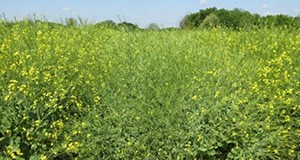
Carinata has been grown commercially for several years on the Canadian prairie and more recently in the US northern plains as a summer crop. For the past four years, UF has been conducting research to evaluate various management practices that allow incorporation of carinata into current cropping systems as a winter crop with minimal modification to existing infrastructure in the southeastern US. This 8-page fact sheet is a major revision that discusses carinata characteristics, biology, nutrient management, tillage, variety selection, planting dates, seeding depth, seeding rate, row spacing, weed management, disease management, insect management, harvest management, economics, and crop insurance. Written by Ramdeo Seepaul, Christine M. Bliss, David L. Wright, Jim J. Marois, Ramon G. Leon, Nicholas Dufault, Sheeja George, and Steve M. Olson, and published by the UF Agronomy Department, December 2014. Revised October 2015.
http://edis.ifas.ufl.edu/ag389
Guide to Olive Tree Nutrition in Florida
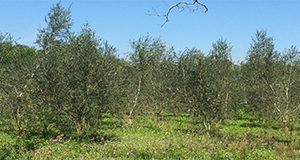 A burgeoning olive industry already exists in the southeastern United States, but research and Extension information regarding olive fertilization recommendations in Florida is limited. While there are data and recommendations for olive from the University of California, the University of Georgia (UGA), and other institutions around the world, there are no data from which we can derive Florida-specific recommendations. This 6-page fact sheet uses many of the existing recommendations for mature, high-density, and traditional grove spacing as guidelines until data specific to Florida production are generated. It discusses leaf tissue sampling procedures, leaf tissue sufficiency ranges, nitrogen fertility, phosphorus and potassium fertility, boron, concerns for olive production in Florida, and other resources for olive production in the state. Written by Michael J. Mulvaney, Rao Mylavarapu, Peter C. Andersen, Mack Thetford, and Jennifer L. Gillett-Kaufman, and published by the UF Agronomy Department, May 2016.
A burgeoning olive industry already exists in the southeastern United States, but research and Extension information regarding olive fertilization recommendations in Florida is limited. While there are data and recommendations for olive from the University of California, the University of Georgia (UGA), and other institutions around the world, there are no data from which we can derive Florida-specific recommendations. This 6-page fact sheet uses many of the existing recommendations for mature, high-density, and traditional grove spacing as guidelines until data specific to Florida production are generated. It discusses leaf tissue sampling procedures, leaf tissue sufficiency ranges, nitrogen fertility, phosphorus and potassium fertility, boron, concerns for olive production in Florida, and other resources for olive production in the state. Written by Michael J. Mulvaney, Rao Mylavarapu, Peter C. Andersen, Mack Thetford, and Jennifer L. Gillett-Kaufman, and published by the UF Agronomy Department, May 2016.
http://edis.ifas.ufl.edu/ag405
Pest identification Guide: Florida flower thrips Frankliniella bispinosa (Morgan)
The Florida flower thrips is a known pest of blueberry but its status in other crops is unclear. Florida flower thrips transmits Tomato spotted wilt virus and possibly other tospoviruses. This species is primarily a flower feeder, so most damage would be expected on the flower or fruit. Learn to identify the Florida flower thrips with this two-page illustrated guide written by Jeffrey D. Cluever and Hugh A. Smith and published by the Department of Entomology and Nematology.
edis.ifas.ufl.edu/in1125
Zika Vector Control for the Urban Pest Management Industry
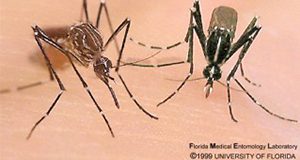
Zika is a mosquito-transmitted virus that has recently spread to the Americas. Zika virus (ZIKV) was discovered in 1946 in Africa where it was isolated from a Rhesus monkey in the Zika forest of Uganda. In 2007, a disease outbreak occurred on the Yap islands in Micronesia, and in 2013, an outbreak occurred in French Polynesia. In 2015, a large outbreak occurred in Brazil, and ZIKV has since spread through the Americas. As of April 18, 2016, 15 counties in the state of Florida had reported travel-associated Zika cases. This seven-page fact sheet provides an overview of ZIKV, including its incidence and distribution, transmission and symptoms, and the connection between zika virus and infant microcephaly. This article also explains the biology and identification of the mosquito that vectors the virus with a focus on how to manage the vector using inspection, larviciding, adulticiding, monitoring, and personal protective equipment. Written by Casey Parker, Roxanne Connelly, Dale Dubberly, Roberto Pereira, and Philip Koehler and published by the Entomology and Nematology Department.
http://edis.ifas.ufl.edu/in1131
Muestreo por Golpeo para el Psilido Asiatico de los Citricos (PAC). Hoja de campo

This field sheet provides information on Tap sampling for Asian Citrus Psyllid (ACP). Monitoring ACP populations is an important tool in the integrated management of citrus greening. The most efficient way to estimate field populations of this insect is by monitoring adults. Tap sampling has proven to provide data needed to make informed decisions for managing this insect pest. This two-page field sheet is the Spanish version of IN1116 TAP Sampling for Asian Citrus Psyllid (ACP) Field Sheet. Written by Phil Stansly, and published by the Entomology and Nematology Department.
http://edis.ifas.ufl.edu/in1122
Spiderwort Control in Hay Fields and Pastures
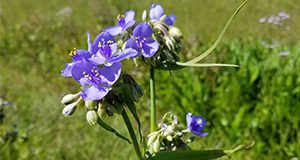
Spiderwort is a native perennial species found throughout the eastern half of the US. The plant’s large, fleshy stem creates problems for hay production. This 2-page fact sheet provides a brief overview of the plant as well as information on control through herbicide use. Written by Michael Durham, Jason Ferrell, and Brent Sellers, and published by the UF Agronomy Department, May 2016.
http://edis.ifas.ufl.edu/ag407
Pest Identification Guide: Chilli thrips Scirtothrips dorsalis Hood
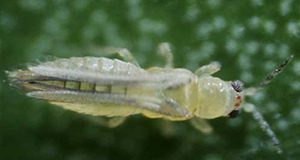
Chilli thrips transmits the ilarvirus Tobacco streak virus (TSV) and the tospoviruses Groundnut bud necrosis virus (GBNV), Groundnut chlorotic fan-spot virus (GCSFV), and Groundnut yellow spot virus (GYSV). This species primarily feeds on young, tender foliage. Feeding on foliage may result in silvering leading to necrosis, leaf curl (upward), distortion, and defoliation. Feeding on the fruit may cause scarring, discoloration, and the formation of corky texture on the fruit. Learn to identify the chilli thrips with this two-page illustrated guide written by Jeffrey D. Cluever and Hugh A. Smith and published by the Department of Entomology and Nematology.
http://edis.ifas.ufl.edu/in1124
Metsulfuron-Methyl-Containing Herbicides Potentially Damaging Ornamentals when Applied to Turfgrass
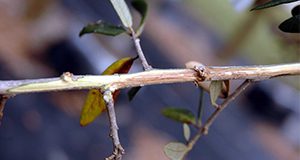
Metsulfuron-methyl, also known as MSM, is an herbicide that is used to control broadleaf weeds and certain grass weeds. It provides effective control of some of the most problematic turfgrass weeds, such as wild garlic, Florida betony, dollar weed, and small Virginia buttonweed. Metsulfuron-methyl is absorbed by plant foliage, so if landscape plants come into contact with the spray or drift they can be injured. This four-page fact sheet describes the potential problems with metsulfuron herbicides, the areas most subsceptible to damage, how to diagnose injury, and how to reduce damage. Written by Chris Marble, Jason Smith, Timothy K. Broschat, Adam Black, Ed Gilman, and Celeste White and published by the School of Forest Resources and Conservation Department.
http://edis.ifas.ufl.edu/fr400
Insect Pest Management on Turfgrass
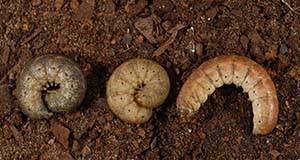
Turfgrass is grown in many environments and for different uses, including home lawns, parks, athletic fields, cemeteries, golf courses, sod farms, pastures, and right-of-ways. The intensity of turfgrass insect management largely depends on the turf species, variety, and its intended use. This eighteen-page fact sheet describes how to manage a variety of insect pests including armyworms, bermudagrass mite, cutworms, fire ants, ground pearls, hunting billbug, mole crickets, scales/mealybugs, southern chinch bug, twolined spittlebugs, tropical sod webworm, and white grubs. Written by Eileen A. Buss and Adam G. Dale, and published by the Entomology and Nematology Department.
http://edis.ifas.ufl.edu/ig001
Management of Cucurbit Downy Mildew in Florida
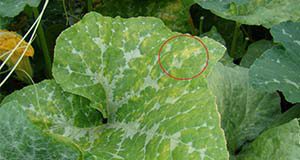
Cucurbit downy mildew is a major disase that affects over 40 species of cucurbits, like watermelon, muskmelon, cucumber, squash, and pumpkin. The classic sign of the disease is the presence of dark sporangia, a structure that holds developing spores, on the underside of infected leaves. As the disease progresses, it may lead to large necrotic areas that cause defoliation and a reduction of yield and marketable fruit. This nine-page fact sheet describes the symptoms and signs, epidemiology and disease cycle, host range and pathotypes, and the ways to manage cucurbit downy mildew. Written by Mason J. Newark, Mathews L. Paret, Nicholas S. Dufault, Pamela D. Roberts, Shouan Zhang, Gary E. Vallad, Josh Freeman, and Gene McAvoy, and published by the Plant Pathology Department.
http://edis.ifas.ufl.edu/pp325
How the General Public and Local Officials Prefer to Learn about Agricultural Water Use in Florida
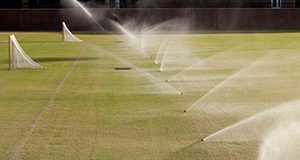
Water is a precious resource that is invaluable to the state of Florida. The amount of water being used daily in the state is estimated at 14.3 million gallons. Part of a series dedicated to describing the preferred ways of learning about agricultural water use in Florida, this study can be used to assist Extension educators and the agricultural industry at large in the development of strategies meant to inform people about the realities of water use. This three-page fact sheet helps Extension educators understand preferred learning mediums so they can provide useful information about agricultural water use. Written by Courtney T. Owens, Alexa J. Lamm, and Ricky W. Telg and published by the Agricultural Education and Communication Department.
http://edis.ifas.ufl.edu/wc247
Landscape Integrated Pest Management
Every landscape manager has a pest management toolbox, which contains tools that represent different management strategies. People can be quick to use pesticides, but an integrated approach using multiple tools can be much safer, have longer lasting beneficial effects, and in some cases cut costs. This 5-page fact sheet will help Extension agents and specialists, lawn and landscape managers, Florida Master Gardeners, and homeowners develop long-term sustainable pest management programs using an Integrated Pest Management (IPM) framework. Written by Adam G. Dale and published by the Department of Entomology and Nematology.
http://edis.ifas.ufl.edu/in109
University of Florida Potato Variety Spotlight: 'Atlantic'
This article introduces the potato variety, ‘Atlantic’, which was tested in trials at the University of Florida.’Atlantic’ is a white-skinned, chipping potato commonly cultivated in Florida and resealed as a white mutant of the USDA breeding program. This three-page fact sheet provides the general characteristics, season length and growth information, fertilization and planting instructions, as well as disease information for the potato variety, ‘Atlantic’. Written by Rodrick Z. Mwatuwa, Christian T. Christensen, and Lincoln Zotarelli, and published by the Horticultural Sciences Department.
http://edis.ifas.ufl.edu/hs1278
